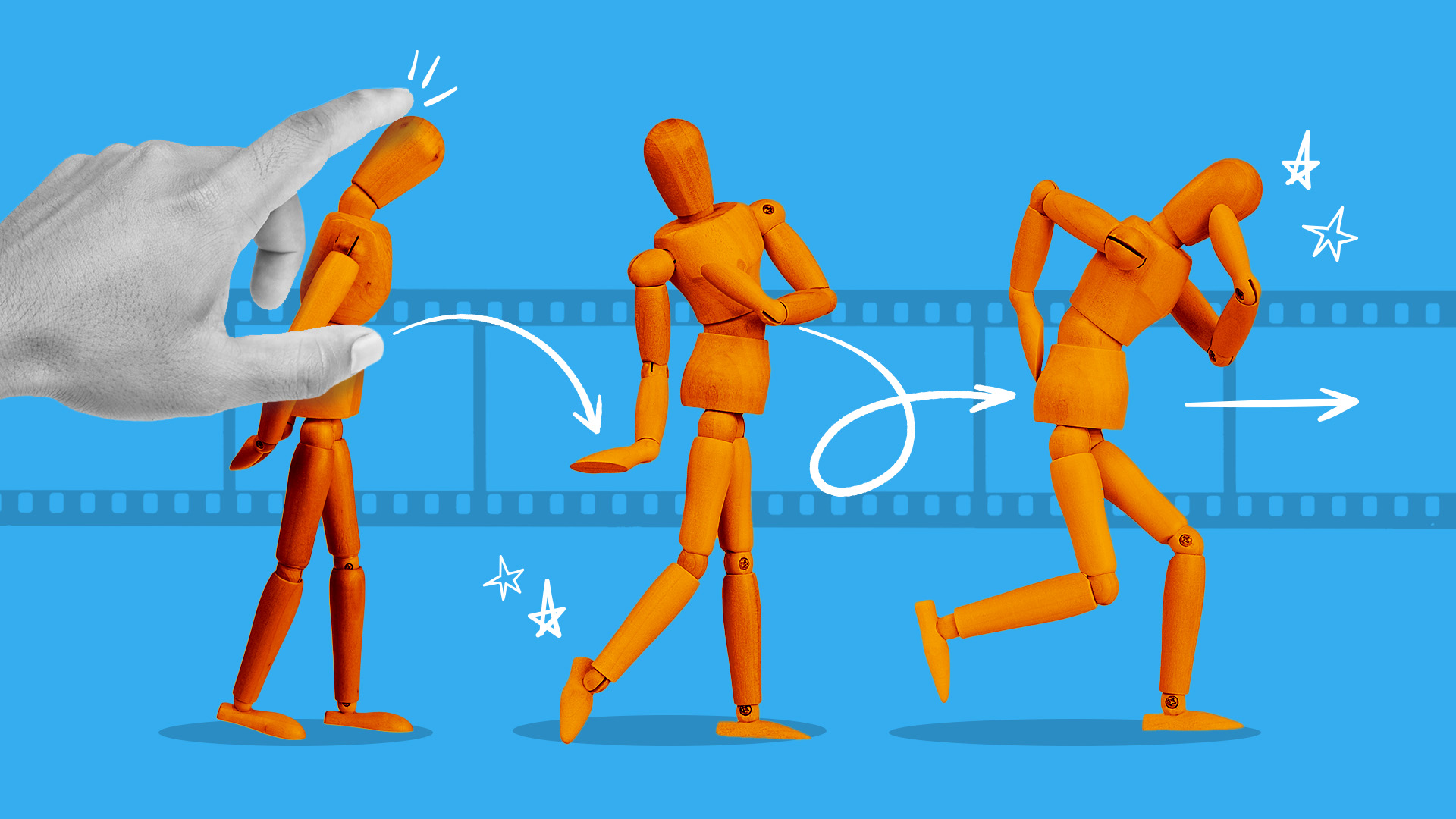A-Roll vs B-Roll: Differences and Similarities Explained

The success of your video marketing campaign hinges on your ability to create a compelling story. Two of the most fundamental types of footage used in video production are A-roll and B-roll. While both are essential to storytelling, they serve different roles, bringing depth and dimension to your content.
Here’s everything you need to know about B-roll vs. A-roll footage to create compelling content and elevate your brand’s storytelling.
What Is A-Roll Footage?
A-roll footage is the primary content of a video. It features the main subjects or focal points. This footage may include interviews, dialogue, voice-overs, or whatever central action you want to highlight. Since it often contains essential audio and imagery, A-roll footage is typically clear, well-lit, and visually focused on the subject. For example, if you were creating a car commercial for a new make and model, the vehicle would be the primary subject matter of your A-roll.
Purpose of A-Roll Footage
The purpose of A-roll footage is to convey the primary story, focusing on essential information. This type of footage introduces the main characters, drives the plot, or delivers the core message of the video. In interviews, for instance, an A-roll captures the person speaking, while in narrative content, it might depict the main actions or interactions.
Best Practices for Shooting A-Roll Footage
Here are a few tips to help you shoot great A-roll footage:
- Use Proper Lighting: A-roll footage requires clear, high-quality visuals, so set up adequate lighting to reduce shadows
- Maintain Focus On the Subject: Make sure the main subject matter is center frame, and there are minimal distractions
- Capture Clear Audio: Use high-quality microphones and limit background noise to enhance audio clarity
- Use a Tripod or Stabilizer: Shaky footage can detract from the professionalism of A-roll
You should also develop a clear plan before you start filming. Follow a video production planning checklist to ensure your team is as prepared as possible.
Best Practices for Editing A-Roll Footage
Editing A-roll footage effectively ensures your message comes through clearly and directly. You’ll need to:
- Cut Out Filler: Trim any unneeded pauses or filler words to keep your audience engaged
- Sync Audio With Visuals: Ensure the audio aligns with the visuals, especially if it’s a talking-head segment
- Establish a Logical Sequence: Arrange A-roll footage in a sequence that logically and naturally tells the story
Be mindful of any inconsistencies that could distract your audience or detract from your message. You need a consistent tone, volume, and style throughout.
What Is B-Roll Footage?
B-roll footage consists of supplemental visuals that complement A-roll by providing additional context and detail. While A-roll is the “main story,” B-roll provides background, setting, or illustrative shots, often adding depth and variety to the visual narrative.
For example, in a documentary, B-roll might include cutaway shots of the environment, activity, or close-up details that enhance the main footage. B-roll serves to fill in visual gaps, create smoother transitions, and keep the content engaging.
Purpose of B-Roll Footage
Think of B-roll as a tool for setting the scene. It helps your audience understand what’s going on around the main focus of your content. B-roll provides visual context and covers up any jump cuts. You can also use this additional footage to add variety to your imagery.
In the car commercial example, your B-roll shots may include footage of rough terrain to set the scene or a 360-degree walk-around view of the car as you jump cut from one stunt to the next.
Best Practices for Shooting B-Roll Footage
When shooting B-roll, you’ll need to:
- Capture a Variety of Angles: Shoot from different perspectives to provide diversity
- Use Slow Motion: B-roll is less structured, so experiment with zoom or slow motion
- Shoot More Than You Think You’ll Need: It’s always best to have extra footage than to lack variety when editing
B-roll is an important resource that can help you fill in the gaps during post-production editing. Make sure you have enough high-quality footage to transform your video into a cohesive piece of content.
Best Practices for Editing B-Roll Footage
Here’s how you can effectively edit B-roll during post-production:
- Align Your Narrative: Place B-roll where it can best support A-roll
- Use for Transitions: Prioritize the use of B-roll during transitions
- Maintain Visual Flow: B-roll needs to match the overall style and tone of your primary footage
Most importantly, don’t overuse B-roll. Too much B-roll can detract from your primary narrative.
Summary of Key Differences
The A-roll vs. B-roll comparison can be summed up in these three key differences.
Purpose in Storytelling
A-roll delivers the main message or plot, while B-roll supports your primary story and adds context. For example, in a corporate interview, A-roll footage focuses on the speaker, while B-roll might show relevant actions or environmental shots, enhancing understanding without disrupting the speaker’s narrative.
Framing and Composition
A-roll footage typically uses conventional framing techniques. You’ll focus on people or subjects at the center of the narrative. B-roll gives you more flexibility in framing, allowing for close-ups, wider shots, and slow-mo clips.
Audio Requirements
A-roll generally includes essential audio like dialogue or narration, requiring high-quality sound to communicate the message clearly. B-roll usually does not typically have its own audio, so this is a great time to add supplemental audio, including background music or a voiceover.
Related: Video Marketing Strategy: Create Marketing Videos the Right Way
How QuickFrame Can Streamline Video Production
QuickFrame provides a streamlined video production process. We handle planning and shooting, editing, post-production, and more. Our team connects brands with incredible video makers from around the globe to help your brand create impactful video creative.
Ready to get started? Connect with QuickFrame to maximize the impact of your next video campaign.
A-Roll vs. B-Roll: Final Thoughts
Understanding the distinct roles of A-roll and B-roll footage can elevate the quality of any video project. Use these complementary types of footage to create a holistic piece of content that gets your brand noticed by its target audience and leaves a lasting impression.
Do More with Video
Learn how we can help you produce more quality videos affordably and at scale.


